How to Use Your Handspun
It is all well and good to know how to spin and to be able to spin beautiful yarn… But what happens when you are just drowning in handspun yarn? What if you have made so much handspun yarn and you don’t even know what to do with it? What do we do with all that yarn?
I’ve been spinning since 2006 and over the years have literally created a mountain of handspun yarn in my home. So in today’s video, I’ll show you many of the projects that I’ve made with my handspun. I use my handspun yarn in knitting, weaving, and now also machine knitting projects.
Why it’s important to use your handspun yarn
The goal of using handspun yarn in a project is to get information out of that yarn — what does it feel like as knitted fabric? or woven fabric? If it feels stiff or rough, maybe I need to lighten up on my drafting technique. Or if it feels too fuzzy or soft, maybe I need to spin with a tighter twist. I need to feel the finished fabric and use that sensation to go back and inform how I will spin the next batch of fibre.
For years I was spinning very fine and dense worsted yarn. Then after actually knitting with my fine and dense handspun yarn, I discovered I didn’t like the consistency of the fabric that that yarn would make… at all! The fabric felt too wiry and crispy in the end. Only after having that experience of knitting it up and feeling what that fabric felt like, then I could go back and then change the decisions that I made about spinning it. So everything that is involved in the process of spinning:
- FIBRE SELECTION: choosing the fibre blend or the sheep breed that you will spin
- FIBRE PREPARATION: whether it is combed, carded, made into a batt, or made into a rolag, etc.
- DRAFTING TECHNIQUE: whether you spin the fibre with a worsted or woolen draft. If it’s worsted, then is it short forward worsted draft or short backwards? If it’s woolen, are you spinning long draw from rolags? or spinning from the fold?
- SPINNING SINGLES: how thick is this yarn? How thin are my singles?
- PLYING: When I ply my singles back, what does it look like? How much ply twist?
There’s so many considerations that go into how to spin a handspun yarn. It’s spinning and then using your handspun to learn about your spinning, then going back to more spinning… this is how we get better at spinning.
Weaving with Your Handspun Yarn
How can we work with it a little bit faster so that we can get that feedback about our spinning? You can absolutely hand knit and crochet with your handspun yarn. For me, I also enjoy the efficiency that comes from weaving and machine knitting with my handspun yarns.
A while back we worked with Debbie Held on this idea of running a make-along or a weave-along to take all of your like little bits and bobs and scraps of handspun yarn that you’ve spun by like playing with different colours and textures on a weaving loom.
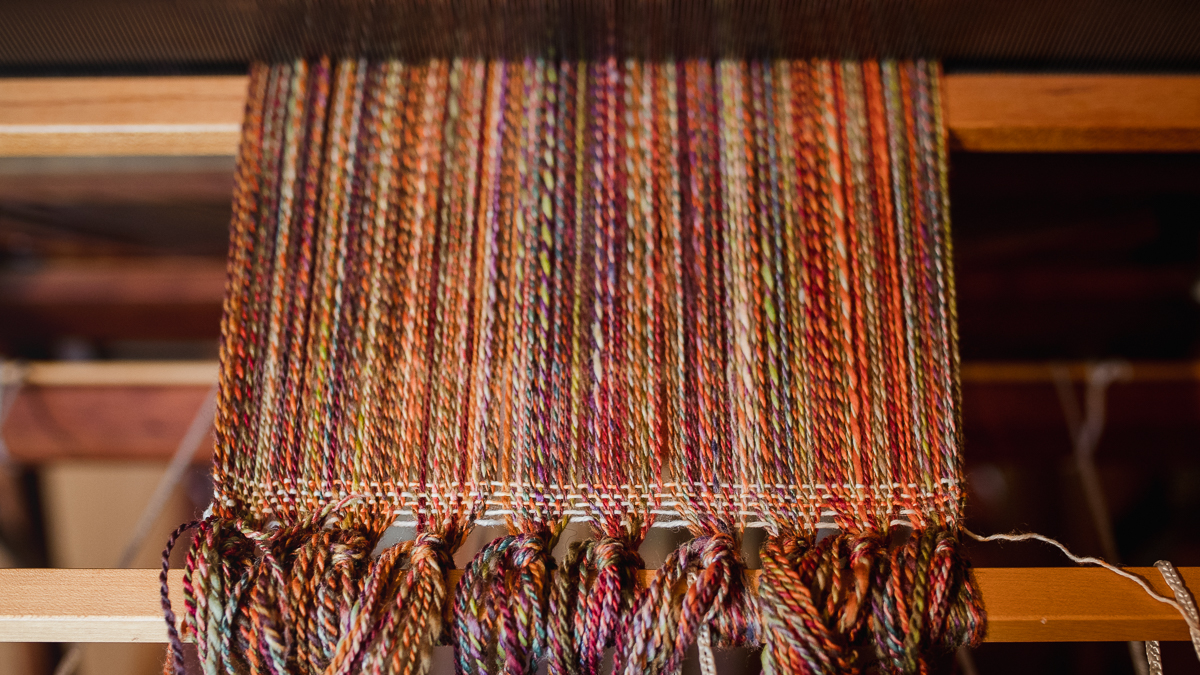
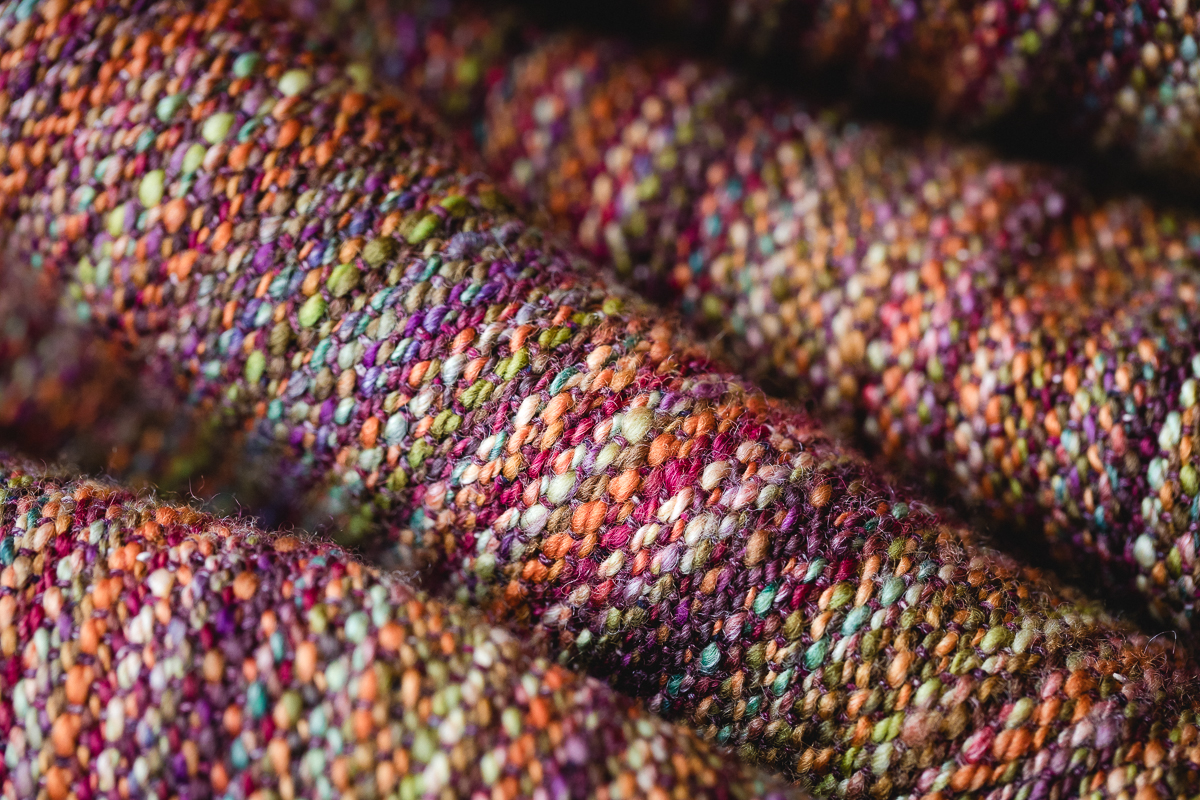
Consider using your handspun yarn as warp, weft or both!
Machine Knitting with Your Handspun Yarn
One of the reasons why I’m so interested in machine knitting is the ability to make things a little bit quicker so that I can get to that fabric feel.

I have plenty of handspun yarn that has been earmarked for CSM socks! But in terms of machine knitting, I also have an LK150 from Silver Reed. It is a flat bed knitting machine that is the perfect, perfect size for working with hand knitting yarn — everything from sport weight, DK weight, or worsted weight, that is the perfect sweet spot for this particular knitting machine.
And so I’ve been knitting some of my handspun into the WPI (wraps per inch) Hat designed by Rachel Smith. I’m using the original pattern and kind of converting it into machine knitting instructions. The first thing that you need to start with is your wraps per inch measurement!
Then using my wraps per inch measurement for my handspun yarn, I check the chart for what size knitting needles to use and what category my yarn is (sport, dk, worsted, etc) and then knit a swatch on the knitting machine with settings that are suitable for the size of my handspun yarn.
To knit the WPI hat on the flatbed knitting machine, I basically had to open up the pattern to knit it flat back and forth rather than in the round on knitting needles. I cast on with waste yarn and knit a few inches of stockinette, then added one row of ravel cord and used a double e-wrap cast on with my handspun yarn. I knit about 2 inches of stockinette then manually reformed the stitches to create a 2×2 ribbing. Then I knit the body of the hat in stockinette, switching between two balls of handspun yarn every 6 rows. Then it was easier to work the crown decreases on knitting needles, so I transferred the stitches onto a long circular needle and finished up the decreases. Finally, I cinched up the top and sewed the sides of the hat together.
Here are some project ideas and inspiration to get you started with using your own handspun yarns:
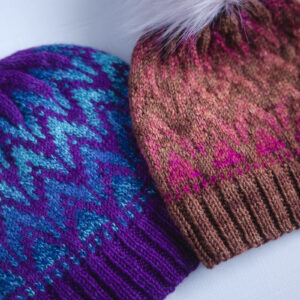
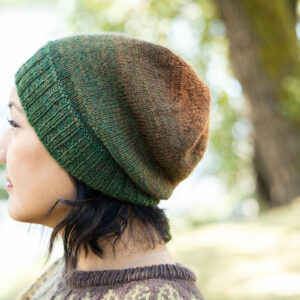
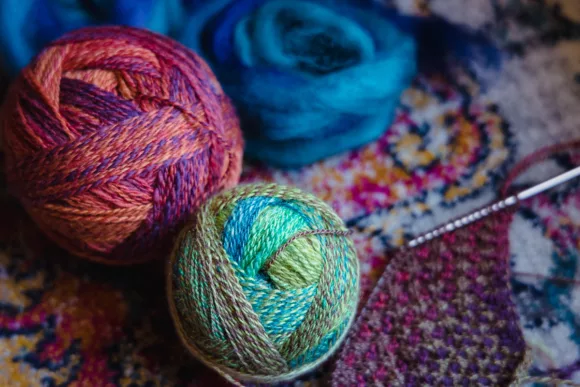
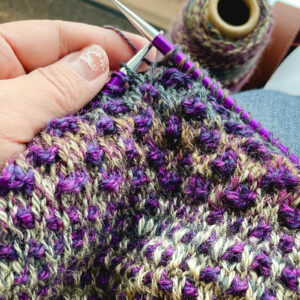
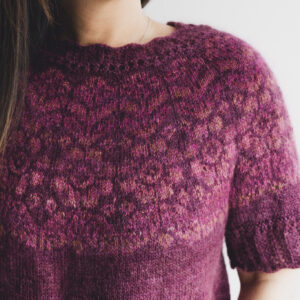
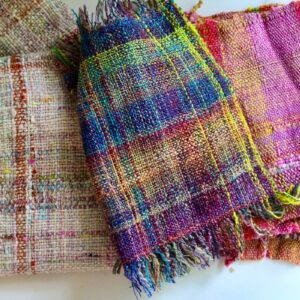
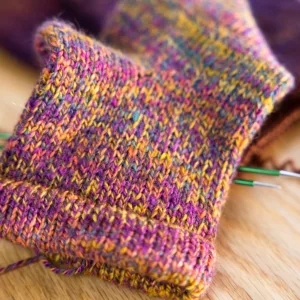
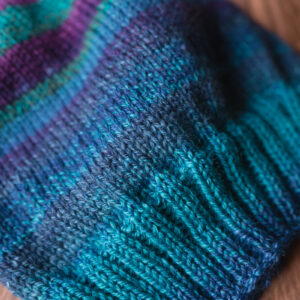
If you want to learn more about spinning, fiber preparation, working with blending boards, working with handpainted color, all of those things, please come and join us inside the School of SweetGeorgia. We have an All-Access Membership where you can join and watch all our classes OR we actually have a new offering where you can focus on just the spinning classes in our Spinning Membership.
I would love to hear about how you are working with your handspun yarn. What have you made from your rolags? What are you planning to make from your handspun yarn? I’d love to hear about it here! Just comment below…
The post How to Use Your Handspun appeared first on SweetGeorgia Yarns.
Comments
Post a Comment